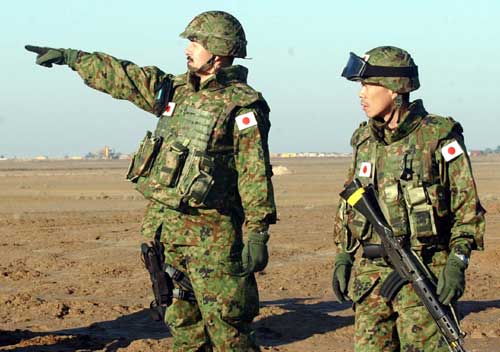President Barack Obama signed the National Defense Authorization Act for fiscal year 2013 into law, Jan. 2.
Among other things, the act authorizes a 1.7-percent increase in Soldier pay, effective Jan. 1, as well as funds for Army procurement, operations, maintenance, and research and development for both the generating force as well as for the operational force engaged in overseas contingency operations.
The act means that Congress has approved a plan for how the Army can spend money for fiscal year 2013, which actually began Oct. 1, 2012, and runs through Sept. 30, 2013.
The National Defense Authorization Act, or NDAA, authorizes the Army, and other departments, to spend money. But Congress must still pass additional legislation to “appropriate” money, to take money from the U.S. Treasury and hand it over to the Department of Defense, in order to pay for what is spelled out in the Authorization Act.
Still facing lawmakers, the Department of Defense, and the Army, however, is the threat of sequestration, which could now happen in March. Were sequestration to occur, it could change the amount of money the services receive, despite what kind of spending is authorized in the NDAA 2013. That possibility has the Department of Defense planning for a future that could be different from what is spelled out in the NDAA.
“We’re entering a phase of, of serious planning,” said George Little, Department of Defense spokesman, earlier this week. “We don’t want sequester to go into effect. This is bad for everyone, again, not just for the Department of Defense. But we are in a period of fiscal turmoil, to say the least, and we need to get beyond this.”
The NDAA 2013 doesn’t just spell out how the Army is authorized to spend money during fiscal year 2013, it also spells out some other changes for how the services conduct business.
For the active Army, the end strength drops to 552,100 Soldiers by Sept 30, 2013, a decrease of nearly 10,000 Soldiers in the active-duty force. For the Reserve components of the Army, the authorized end strength remains the same as last year, with the Army National Guard at 358,200 and the Army Reserve at 205,000.
One section of the act calls for establishment of special victim capabilities within the military departments to respond to “allegations of certain special victim offenses.”
According to the law, service secretaries must establish “special victim capabilities” that can investigate and prosecute child abuse, domestic violence and sexual offenses. Those capabilities must also include support for victims of those offenses. Initial capability must be available within a year of the law’s signing.
Another section of the law requires the Department of Defense to provide sexual assault prevention and response training modules for new or prospective commanders. Training will include, among other things, how to foster a command climate that doesn’t tolerate sexual assault, and one that encourages victims to report assault.
Another section of the law expands how DOD funds can be used for providing abortions. The current law reads: “Funds available to the Department of Defense may not be used to perform abortions except where the life of the mother would be endangered if the fetus were carried to term.” The NDAA 2013 adds the following to that section of law: “or in a case in which the pregnancy is the result of an act of rape or incest.”
Within the NDAA, the Congress also calls on the Army to conduct a study of the Comprehensive Soldier and Family Fitness Program and the Army’s capability to reduce high-risk and self-destructive behavior among Soldiers. A report on the study must be submitted to Congress by Oct. 31, 2014, and must include trends in high-risk or self-destructive behavior as well as measurements of the effectiveness of the Comprehensive Soldier and Family Fitness Program training efforts to enhance resilience.











